Studio Essentials: High Contrast
Wales' gift to drum & bass lets us in on his studio secrets.

Studio Essentials: High Contrast
Wales' gift to drum & bass lets us in on his studio secrets.

Lincoln Barrett, better known as High Contrast, is one of the drum & bass scene’s most familiar faces. The Welshman’s iconic afro has bobbed behind many a DJ booth on the international circuit since the early noughties, and the wealth of productions he’s made along the way are all held in high esteem.
For Barrett the journey began in the Welsh capital of Cardiff, where he worked in the local Catapult record store and also picked up his first residency at the Silent Running night, performing alongside the likes of Grooverider and London Elektricity. Only a few years later he would release his debut album, True Colours, on the latter’s imprint Hospital Records, a truly important bastion of the sound.
From there on in, he’s not slowed down one jot: Barrett has made his mark on music in all sorts of spheres, remixing major names such as Adele and Eric Prydz, and even helping to select and produce the soundtrack to the London Olympics opening ceremony. Earlier this year he dropped “Remind Me,” his first single on 3Beat and a good example of his effortless liquid sound, and there are also rumors of another full-length on the way via the label later this year. With all this in mind—such history and expertise—it was an obvious choice to let Barrett talk us through what he relies on in the studio.
Out of the Box
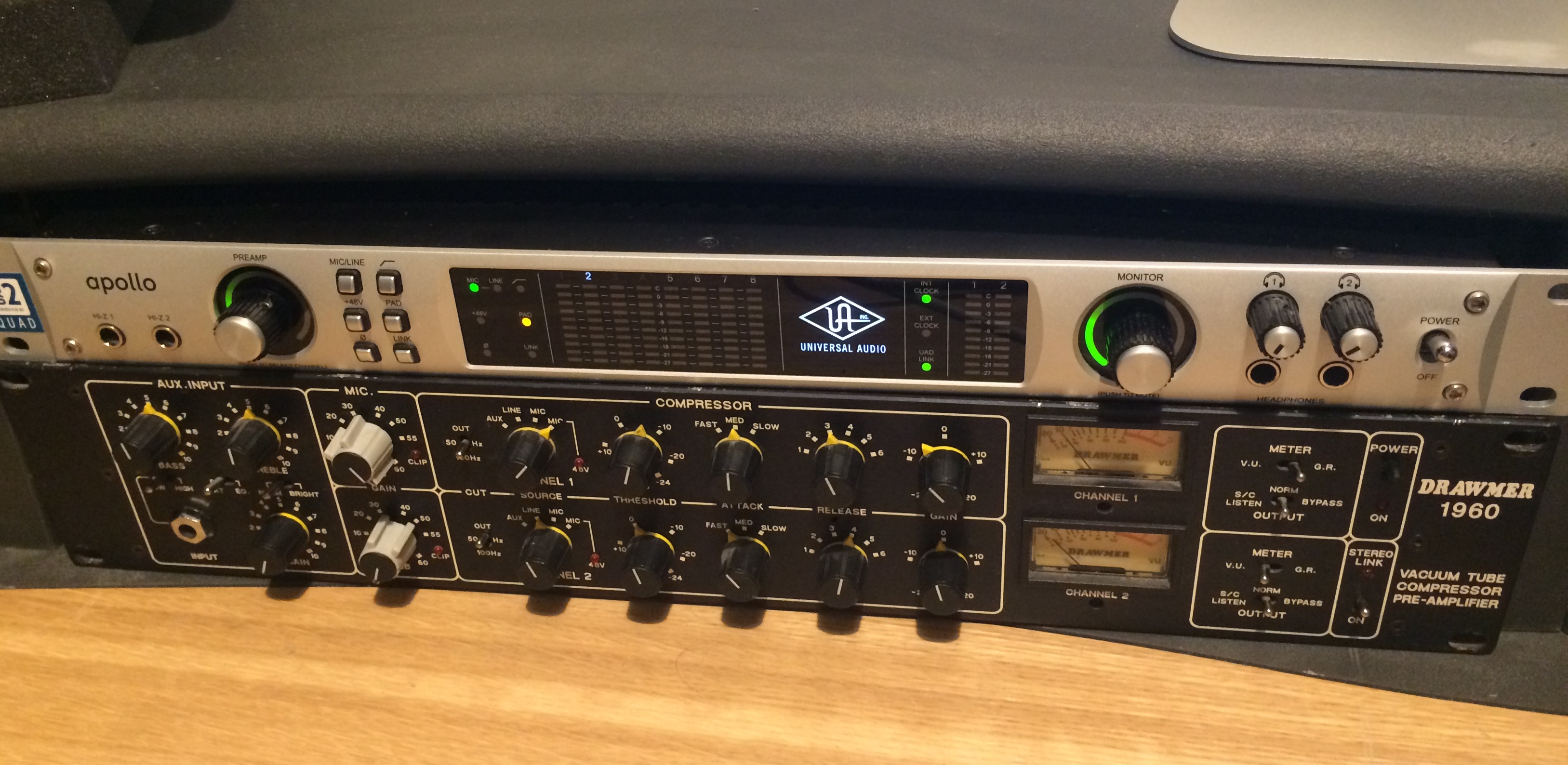
This is my main audio interface, which acts as a soundcard for my iMac. It’s good for routing sounds in and out of my DAW of choice, Cubase (which I’ve used since day one of my productions and still love using); however, the main appeal of it is being able to use it for the Universal Audio custom plug-ins, which are very tasty and don’t take up any of your CPU as they are handled by the Apollo. There are many great plug-ins available, my favorites being the Vertigo VSM3 saturator, the AKG BX 20 spring reverb and the Little Labs Voice of God, which is amazing for getting sub-bass out of things.
I don’t use much outboard gear, I’ve always been mainly in the box as I love the ease of it and being able to work on many, many projects at once. There are, however, certain things that call for analog gear, and getting a vintage / retro sound on vocals or guitars is one of them. Recording things through this strange pre-amp / compressor certainly gives a vintage vibe to recordings, hence the name. Use it cautiously, as I certainly wouldn’t record something I wanted sounding very hi-fi or modern through it.
Maestro Sound System for Woodwinds
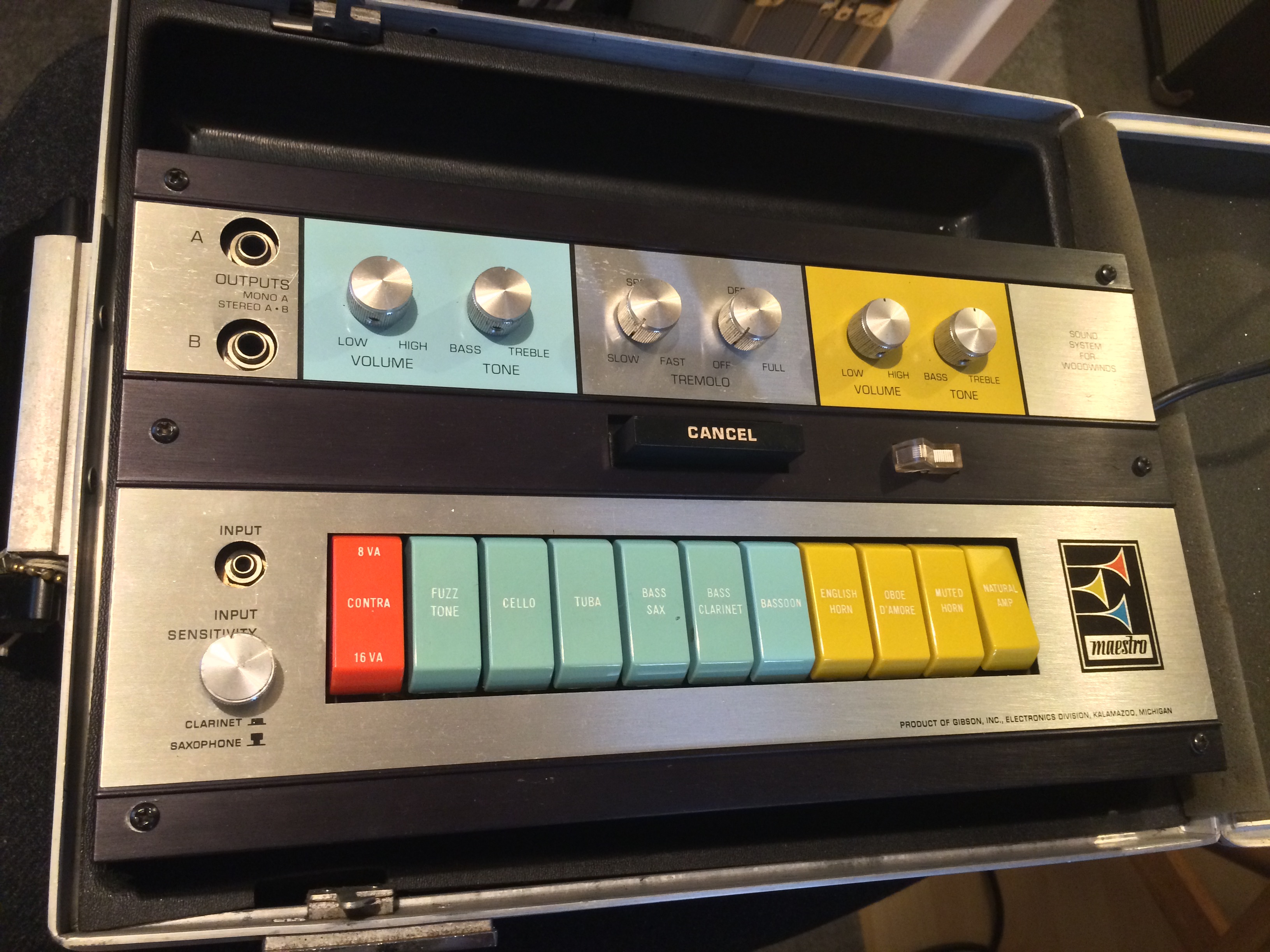
The kind of outboard gear that I like is generally weird, old stuff, rather than the typical studio stuff like compressors or EQs. The so-called Sound System for Woodwinds is a case in point: it was designed to take a mic input from a woodwind instrument like a sax, and then output its various attempts to morph the sound into sounding like another instrument—big chunky buttons that say ‘Tuba,’ ‘Fuzz Tone’ or ‘Cello’ can be pressed solo or in combination, giving weird approximations of those sounds. The fun really starts when you put other things into it like a guitar or voice. It certainly has limited use, but can add a very unusual tone to things. Plus, it just looks really cool!
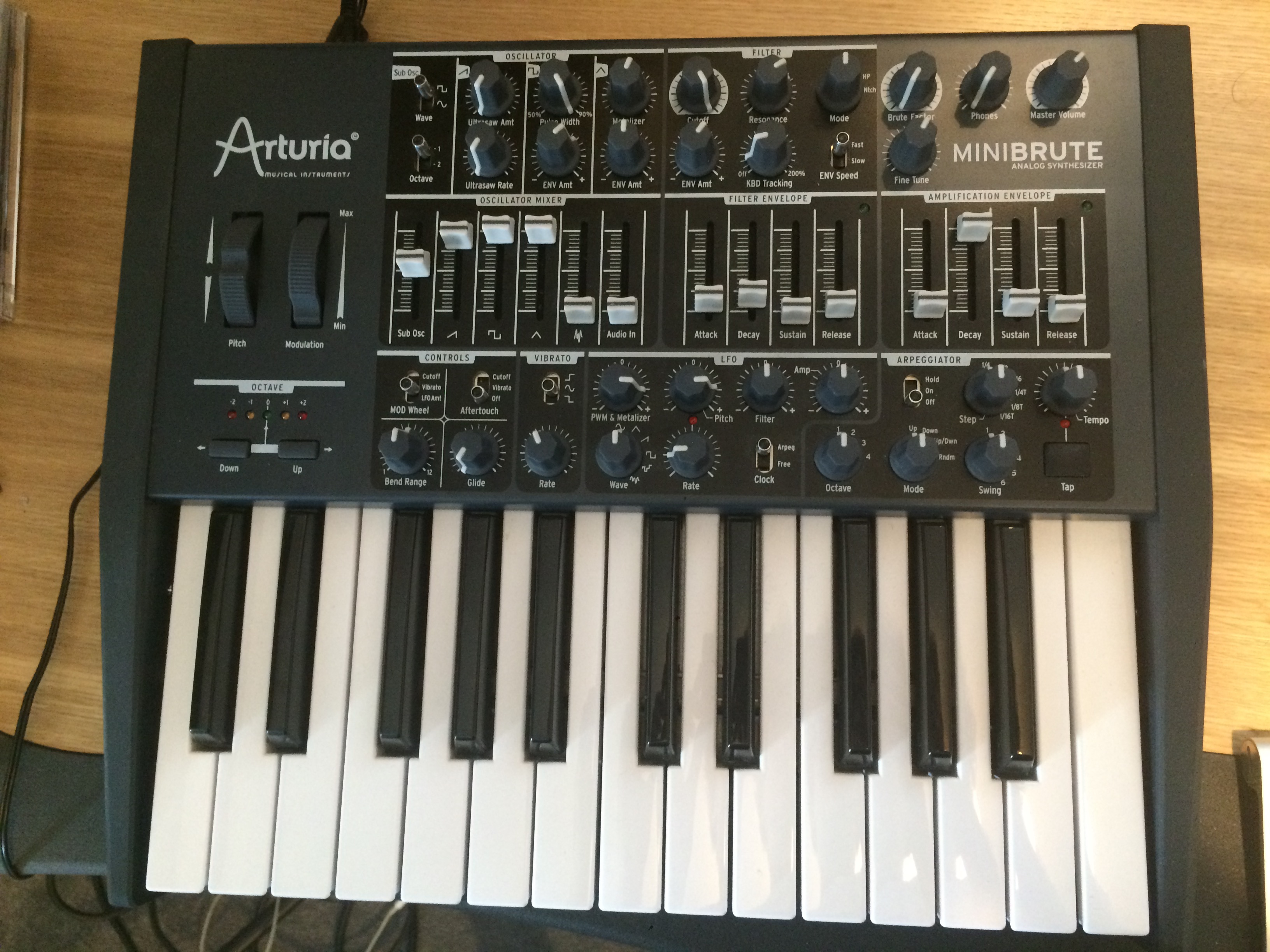
This is a good first entry into the world of analog synths. It’s relatively cheap and easy to get your head around if you’re coming from only using VSTis. It’s a great synth to have sitting on your desktop in hands reach—you can just rustle something up quickly on it and give a new analog texture to a track very quickly. There are no presets and you have to make each sound yourself. Not having the ability to recall a sound forces you to record something there and then, as you probably won’t be able to recreate it again. It’s a good discipline. This synth is good for some gnarly bass sounds too.
In the Box:
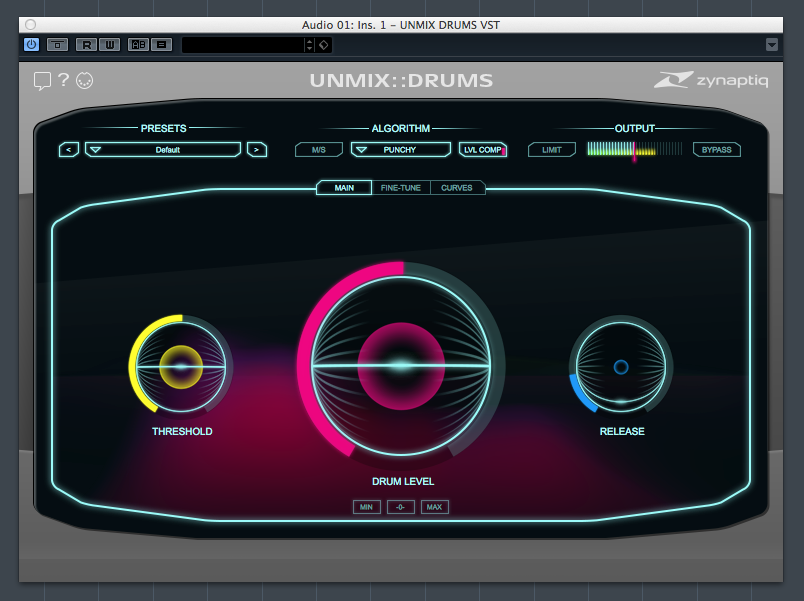
This is a sample addict’s dream: with this plug-in you can remove the drums from a recording, as if by magic. So, if you’ve found a great old soul sample say, but the drums are getting in the way of your own drums, just zap it with this. Nine out of ten times they disappear, or become easily hidden in the mix. This opens up the sampling potential of a whole new wealth of tunes.
Clariphonic Parallel EQ
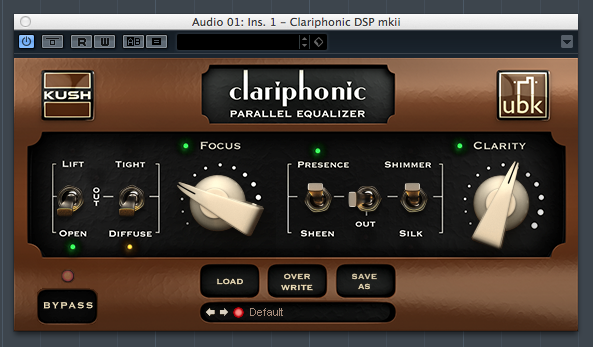
This is a beautiful EQ that focuses solely on the high-end of the frequency range, so it’s perfect for adding sparkle to your drums for example, without making them sound harsh. It’s quite amazing how much you can push the treble with it, without it becoming sibilant and painful to listen to.
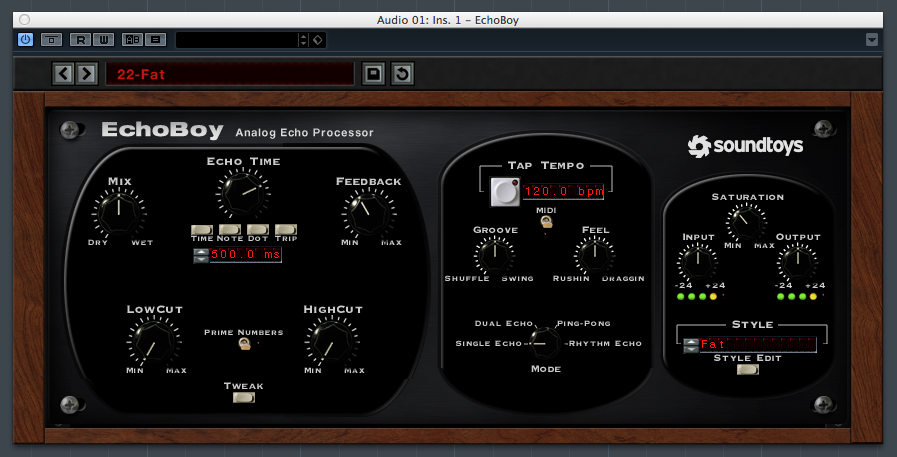
Soundtoys make many great plug-ins and this is one of their best: a very versatile delay that can also work as a reverb, a space echo and many other things. There are almost endless possibilities with it. I’ve used this on every single track that I’ve made since buying it.
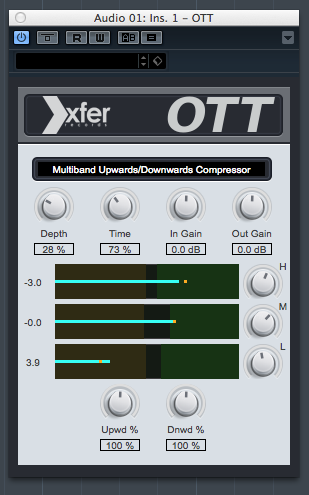
This is a very simple little plug-in from Xfer, but the effect it has is quite unique. It’s described as an ‘upward and downward’ multi-band compressor, and can be used to pump up a sound dramatically. Use it with care: it can be used in small doses, and I find a little touch of it on a vocal can really make it pop in a mix.
Catch High Contrast performing at The Social Festival, taking place in The Kent County Showground on September 9-10. You can buy tickets here.
Support Independent Media
Music, in-depth features, artist content (sample packs, project files, mix downloads), news, and art, for only $3.99/month.

